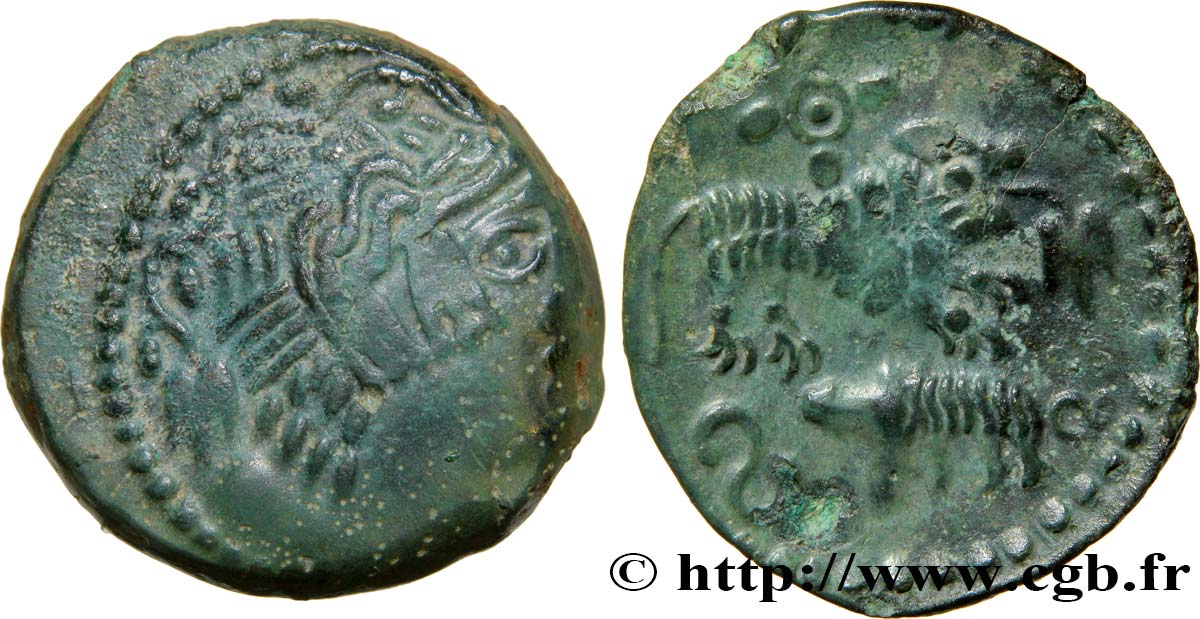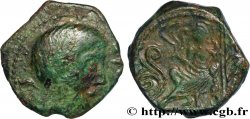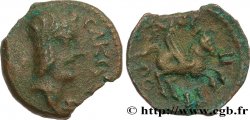E-auction 102-53516 - bga_238233 - GALLIA - CARNUTES (Beauce area) Bronze CATAL au lion et au sanglier
You must signin and be an approved bidder to bid, LOGIN TO BID. Accounts are subject to approval and the approval process takes place within 48 hours. Do not wait until the day a sale closes to register. Clicking on « bid » constitutes acceptance of the terms of use of cgb.fr private e-auctions.
Bids must be placed in whole Euro amounts only. The sale will start closing at the time stated on the item description; any bids received at the site after the closing time will not be executed. Transmission times may vary and bids could be rejected if you wait until the last second. For further information ckeck the E-auctions F.A.Q.
NO BUYER'S FEE.
NO BUYER'S FEE.
| Estimate : | 220 € |
| Price : | 115 € |
| Maximum bid : | 126 € |
| End of the sale : | 30 March 2015 15:05:00 |
| bidders : | 9 bidders |
Type : Bronze CATAL au lion et au sanglier
Date: après 52 AC.
Mint name / Town : Chartres (28)
Metal : bronze
Diameter : 17 mm
Orientation dies : 9 h.
Weight : 3,17 g.
Rarity : R3
Coments on the condition:
Bronze bien identifiable avec un droit décentré mais assez détaillé, et un revers complet mais de frappe molle. Épaisse patine vert antique, un peu plus sombre au revers
Catalogue references :
Predigree :
Cet exemplaire provient de la collection M. G
Obverse
Obverse legend : [CATAL].
Obverse description : Tête à droite, les cheveux ornés d’un ruban ; feuille au bout d’une tige derrière la tête ; légende devant le visage, grènetis.
Reverse
Reverse legend : ANÉPIGRAPHE.
Reverse description : Lion à droite, sanglier à gauche au-dessous ; “rouelle” à quatre digitations au-dessus ; une esse devant le sanglier, grènetis.
Commentary
Cette monnaie est très rare, ce n’est que le second exemplaire que nous proposons après le n° 601 de MONNAIES XV !
L'esse devant le sanglier du revers se retrouve au-dessus de l'aile de l'aigle du revers de l'exemplaire précédent ; il existe des symboles (telle cette esse ou la feuille de vigne) qui sont véritablement récurrents sur ce monnayage relativement homogène
L'annelet accosté de quatre globules au-dessus du lion n'est pas sans rappeler certaines "rouelles" à quatre digitations en bronzes réputées être gauloises, particulièrement bien visible sur l'exemplaire du British museum.
L'esse devant le sanglier du revers se retrouve au-dessus de l'aile de l'aigle du revers de l'exemplaire précédent ; il existe des symboles (telle cette esse ou la feuille de vigne) qui sont véritablement récurrents sur ce monnayage relativement homogène
L'annelet accosté de quatre globules au-dessus du lion n'est pas sans rappeler certaines "rouelles" à quatre digitations en bronzes réputées être gauloises, particulièrement bien visible sur l'exemplaire du British museum.








 Report a mistake
Report a mistake Print the page
Print the page Share my selection
Share my selection Ask a question
Ask a question Consign / sell
Consign / sell
 Full data
Full data









